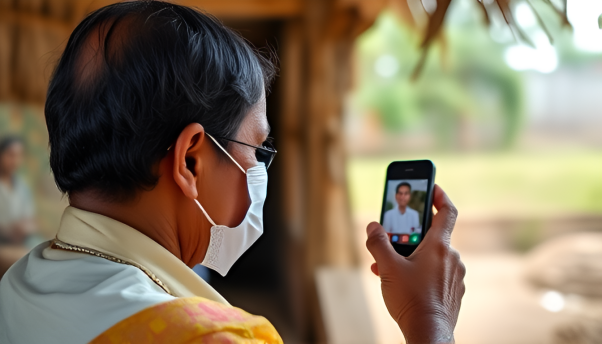The COVID-19 pandemic was a turning point for healthcare delivery systems worldwide, and India was no exception. Amid strict lockdowns, overwhelmed hospitals, and a healthcare infrastructure pushed to its limits, telemedicine emerged as a lifeline. What began as a necessity has now evolved into a transformative tool reshaping the healthcare landscape in India. Post-pandemic, telemedicine has witnessed exponential growth, driven by technological advancements, supportive government policies, and changing patient behaviour.
The Early Days of Telemedicine in India
Before the pandemic, telemedicine in India had a limited footprint, primarily used by a small number of hospitals and startups. Regulatory uncertainties, technological barriers, and low adoption rates among healthcare providers and patients hindered its growth. Despite its potential to address challenges like the rural-urban healthcare divide, telemedicine remained underutilized.
The Pandemic Catalyst
The COVID-19 pandemic dramatically accelerated the adoption of telemedicine. Lockdowns and social distancing measures made in-person consultations risky and, in many cases, impossible. As a result:
- Patients turned to virtual consultations to access medical advice.
- Hospitals and clinics rapidly integrated telemedicine platforms to continue providing care.
- Digital health startups scaled their operations to meet soaring demand.
The Ministry of Health and Family Welfare’s release of the Telemedicine Practice Guidelines in March 2020 provided much-needed clarity and a legal framework, boosting confidence among healthcare providers.
Key Drivers of Post-Pandemic Growth
Post-pandemic, telemedicine’s growth in India has been fueled by several factors:
- Government Initiatives:
- The National Digital Health Mission (NDHM) has created a unified digital health ecosystem, integrating telemedicine services.
- Ayushman Bharat’s teleconsultation initiatives have brought affordable healthcare to underserved regions.
- Technological Advancements:
- Widespread smartphone adoption and affordable internet have enabled access to telemedicine even in rural areas.
- AI and machine learning are enhancing diagnostic accuracy in virtual consultations.
- Private Sector Contributions:
- Startups have expanded their services, offering video consultations, e-pharmacies, and lab test bookings.
- Large hospitals have developed proprietary telemedicine platforms to retain patient loyalty.
- Changing Patient Behaviour:
- Patients now value the convenience of telemedicine, preferring it for routine consultations and follow-ups.
- Increased digital literacy and awareness have reduced hesitation in using virtual health services.
Future Prospects
The future of telemedicine in India is promising, with several trends pointing toward sustained growth:
- Hybrid Healthcare Models:
- Combining telemedicine with physical consultations for a seamless patient experience.
- Focus on Specialized Care:
- Virtual platforms catering to chronic disease management, mental health, and geriatric care are gaining traction.
- Expansion of AI-Driven Solutions:
- AI-powered chatbots, remote monitoring devices, and predictive analytics will further enhance telemedicine offerings.
- Global Collaborations:
- Partnerships with international telehealth providers can bring global expertise to India’s healthcare system.
Conclusion
Telemedicine has evolved from a niche service to a mainstream healthcare solution in India. The pandemic served as a catalyst, but its continued growth hinges on addressing existing challenges and leveraging opportunities. With supportive policies, technological advancements, and growing public acceptance, telemedicine is set to revolutionize healthcare delivery in India, making it more accessible, efficient, and patient-centric.




